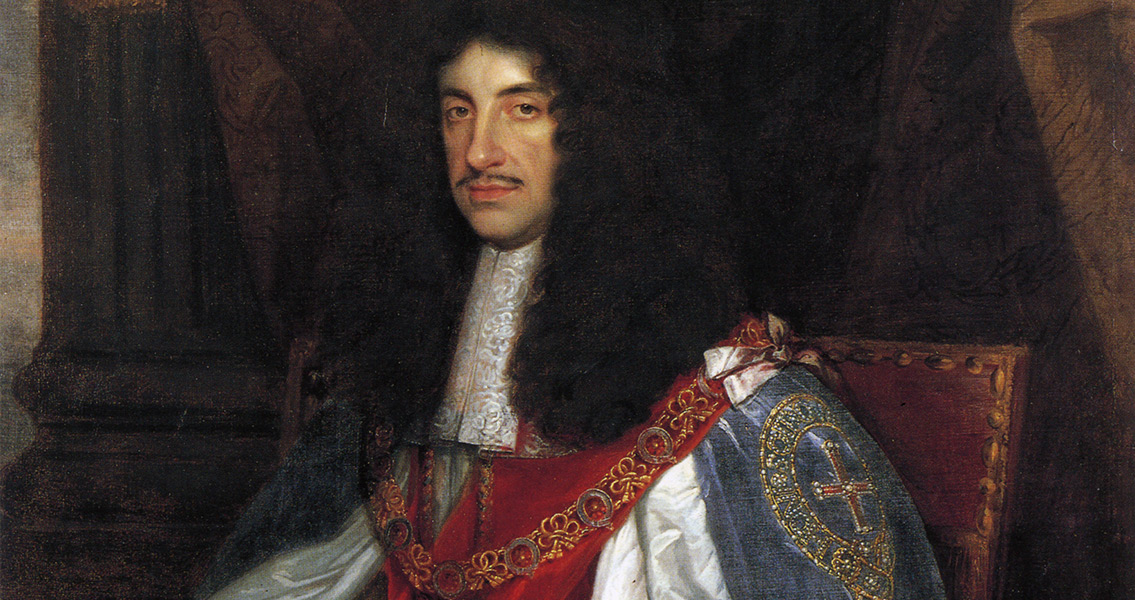<![CDATA[On 25th May, 1660, under invitation from a group of influential Members of Parliament, the exiled King Charles II returned to England at Dover and set about the Restoration of the English monarchy. Charles' father, Charles I, had been the most high profile casualty of the English Civil War. In 1646, when Charles II was just twelve years old, his father was defeated by Oliver Cromwell's Parliamentary forces. A long and complicated trial unfolded as Cromwell and Parliament deliberated the best way to deal with the captured King. Charles himself made one last attempt to save his father's life in 1649, bringing a sheet of paper containing nothing but his signature to Cromwell - giving Cromwell free reign to decide the terms for Charles I's release. As is of course well known, Charles' plea to Cromwell was unsuccessful. Cromwell seemed determined to have the king executed, possibly fearing the dangers of keeping such a powerful figure with still substantial royalist support alive. On January 30th, 1649, the King was beheaded in London. The Prince of Wales at the time of Charles I's capture, Charles II fled to Scotland following his father's death, knowing that staying in England under Cromwell's rule would be dangerous. The Scots proclaimed Charles King of England, a sentiment echoed by pockets of royalist support in Ireland and England. In 1651, Charles attempted to invade England with an army of Scots. The move, which seems reckless with hindsight, was inspired by a number of things. Firstly, Cromwell's New Model Army had invaded Scotland and was advancing on Charles' Royalist stronghold in Perth. The counter-attack into England was an attempt to divert the New Model Army, and prevent Charles' forces being outflanked. Secondly, Charles saw it as an opportunity to avenge his father's death. Finally, it seems that the he had overestimated the amount and strength of royalist support still in England. The invasion of England was stopped at the Battle of Worcester, with Charles' army of Scots all but wiped out. Realising that Scotland was no longer a safe place, Charles fled the British Isles, narrowly avoiding capture and escaping to safety in France. In England, the Commonwealth was initially blighted by constant disagreement between Cromwell and Parliament, making any progress near to impossible. Cromwell grew increasingly frustrated and in 1653 established the Protectorate, a system which bestowed the powers of a monarch on him, without the titles and symbolism. Cromwell oversaw the creation of a radical Protestant state in England. Church attendance became compulsory, plays were banned, and drunkenness and blasphemy were dealt with harshly. By the time of Cromwell's death in 1658, the English had grown tired of this strict, new form of government. Cromwell's son, Richard, lacked the forceful personality of his father. Parliament and the people increasingly rallied against the military government. Early in 1660, General George Monc met with Charles and arranged to restore him and the monarchy to England in exchange for amnesty for anyone who had thought against his father, and a new policy of religious tolerance. Charles accepted the conditions, and returned to England in 1660. From 25th May, 1660, the Restoration period began. The strict Protestantism of the Cromwell era was gradually reversed, leading to a revival in English drama and literature. This was also the period which saw a host of major events - the growth of overseas colonisation and trade, the Black Death striking England, and the Great Fire of London. It saw Oliver Cromwell posthumously convicted of treason, symbolising very explicitly the end of the England he had created and the gradual recovery of the powers of the monarchy, at least until the Glorious Revolution. ]]>
The English Restoration Begins
